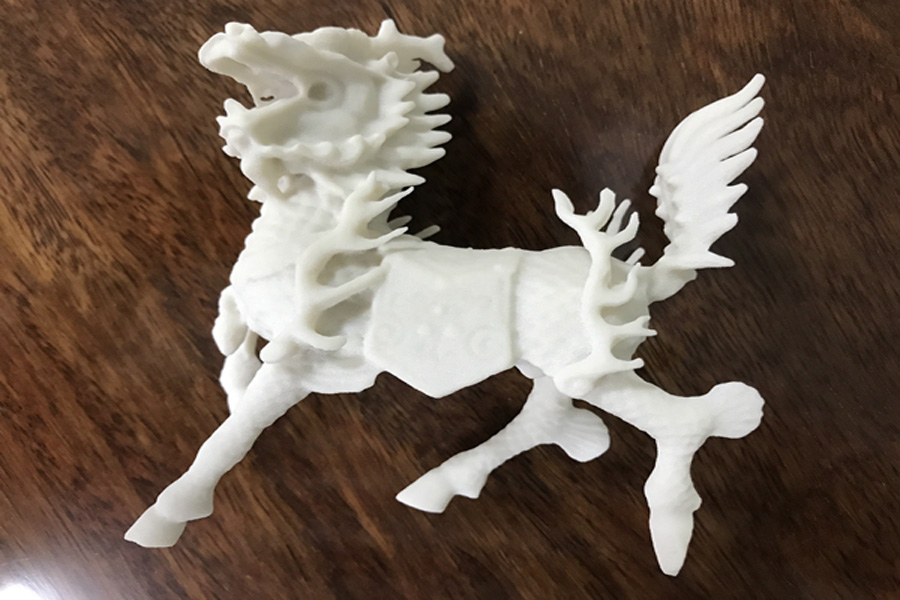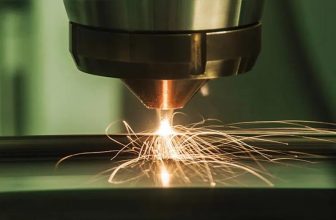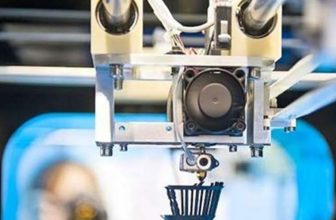
There are currently two options for 3D printing nylon materials, one is white nylon based on SLS 3D printing, and the other is black nylon based on HP MJF (or HP nylon), then these two What is the difference and connection between mainstream nylon and mainstream 3D printing functional plastic?
Multi Jet Fusion (MJF) and selective laser sintering (Seletive Laser Sintering, SLS) are 3D printing processes used for black and white nylon respectively. Both processes are 3D printing processes based on powder beds. The materials are all in powder form, laid flat on the printing platform, and the parts are made by fusing or sintering the powder particles layer by layer. The main difference is the heat source. SLS uses laser as the heat source, while MJF uses an infrared-absorbing ink sprayed on the powder bed, and then the infrared heat source is swept across the printing platform to fuse the inked area.
The properties of the two nylons are roughly the same. There are slight differences in workflow, accuracy, materials, cost and delivery time. Let’s explain them one by one.
Process flow and work flow
The process flow of SLS: First, a thin layer of powder is evenly spread on the forming platform, and it is heated to a temperature close to sintering on the platform. Then use a laser to scan each cross section according to a predetermined path to sinter the powder; then, the platform moves down one layer, and then repeats the process until it is complete. After printing, the entire silo must be cooled before removing the parts from the powder.
The process flow of MJF: first spread a thin layer of powder evenly and evenly on the forming platform, and heat it to a temperature close to sintering on the platform. Slide a carriage with inkjet nozzles (similar to the nozzles used in ordinary desktop 2D printers) through the powder bed, and spray a flux (Fusing Agent) on the powder. At the same time, a detailing agent is sprayed near the edge of the part to prevent powder from sintering; then, a high-power infrared heat source irradiates the powder bed and sinters the area where the flux is sprayed, while the rest of the powder remains unchanged. Repeat the process until all the parts have been built. Similar to SLS, MJF printed parts are encapsulated in powder and need to be cooled down before they can be removed.
Each cross section of the SLS process is sintered point by point, while in the MJF process, the fusion is performed line by line. Line-by-line printing is theoretically faster than a little bit of printing, but in fact, this has little effect on the overall printing time. This is because the printing time of the two processes is mainly determined by the total number of layers, and the printing time for each layer In many cases, it is much shorter than the spreading time of each layer, and the production time of the two types is not particularly different.
After printing, MJF has faster cooling and post-processing than SLS: HP provides a dedicated post-processing station that can speed up the cooling rate of the print bed and help remove dust. In the MJF process, 80-85% of the recycled powder can be recycled and reused, while in SLS, only 50% of the powder can be recycled. Faster powder cooling time and higher powder recovery rate means that when the print bin is only partially filled, the MJF process may start working without hesitation, while the SLS process usually waits for the print bin to be full before starting printing , This subtle but key difference in the work process may cause some MJF lead times to be shorter than SLS, and further affect production costs.
There are two main production equipment for white nylon, one is EOS P110, which is used to print products within 300mm, and the other is Big Mac P770. When the printed items must be printed with a large device (EOS P770), the price may vary. Significant increase, because the large equipment is not easy to fill, the use of large equipment will inevitably cause huge powder loss, high operating costs, and substantial increase in production costs; of course, our main EOS P110 equipment has a moderate size, and its daily use is basically full. When the load is turned on every day, there is basically no need to consider the issue of the above-mentioned print volume, so 3d-printing-china.com is able to provide a very competitive price for the whole network.
Dimensional accuracy
Both MJF and SLS can provide industrial-grade 3D printing with high dimensional accuracy. The accuracy of the two is not very different. If you have to distinguish, MJF is slightly better in dimensional accuracy. This is mainly because the MJF print head prints at 1200 DPI (or about 1 dot per 0.022 mm), while the typical laser spot diameter of the SLS system is about 0.3-0.4 mm; in addition, the detail agent used in MJF ) Helps to print small features and sharp edges.
It is worth noting that both technologies do not require support structures, allowing the creation of free-form models without any support removal marks, but both are prone to warping, so larger flat areas must be avoided. In our tests, we found that MJF parts are more likely to warp than parts printed with SLS.
Appearance and surface quality
The flux currently used in the MJF system is black, because dark materials can absorb heat radiation more effectively, which results in a light gray appearance of MJF parts, which can be passed through an optional post-processing step to achieve a uniform black finish.
SLS parts are usually white and can be dyed in any color. For some specific applications, such as food-related appliances, dark colors such as black and gray are unacceptable. From this point of view, white is undoubtedly more plastic.
Nylon surface
The parts printed by both technologies have a granular surface with a frosted feel, but both can be post-processed to reach a high standard. If aesthetic requirements are the main requirement, it is strongly recommended to use post-processing coloring.
Material performance
The main material used in these two processes is PA 12 (nylon). SLS printed products are slightly weaker in the printing direction (Z direction), while in comparison, MJF parts have excellent strength and flexibility and more uniform mechanical properties.
However, SLS is a complete and time-tested system. Whether it is manufacturers, service providers, or independent researchers, they have fully recorded the performance of SLS materials, the application history is longer, and all aspects of documentation are comprehensive. On the other hand, the important engineering properties (such as impact strength and creep properties) of nylon provided by MJF have not been widely recognized by the industry. Of course, as the technology matures and becomes more widely used, 3d-printing-china.com believes that this will definitely change and get more endorsements and support.
In addition, MJF is an open material platform. At the beginning of its launch, there was only one PA material. Now MJF can provide materials such as PA11, PA+ glass fiber beads, TPU, and even PP, full-color materials. It is foreseeable that HP is the one Strategies can accelerate the speed of material development, and the future can be expected.
On the whole, the performance of white nylon and black nylon is not much different, the material performance of black nylon is better, and the future is more worth looking forward to.
Cost and delivery time
3d-printing-china.com provides a very competitive nylon printing price for the entire network. Whether white nylon or black nylon, it maintains a high discount rate. In terms of performance, black nylon is slightly better, and the price is slightly more expensive, depending on the size. Generally speaking, the general size is less than 300mm, and white nylon is cheaper. If the print size is greater than 300mm but less than 380mm, it is cheaper to use MJF to print. Larger parts need to be printed with P770 large equipment, and the cost will soar. Of course, if there is Possibly, you can also choose to split into small pieces for printing.
The delivery time is generally not much different. Because of the higher powder recovery rate and faster cooling rate, black nylon may have an advantage in delivery time. Of course, 3d-printing-china.com provides 24 hours of fast speed for both materials. Delivery options, I believe that readers who have read this article carefully can understand why delivery time as an option will affect production costs and prices.





